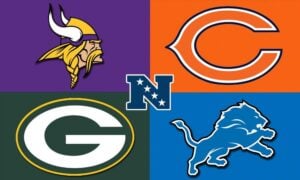Categorizing Assets to Navigate the Dynasty Market

I have a confession to make. Lately, I’ve been having a hard time figuring out what to do with my dynasty rosters, not knowing what steps to take next. It’s often tricky to figure out the best course of action when there seems to be a lot of concepts and ideas floating around out there within the dynasty landscape. The lack of clear guidelines on how to proceed with roster management can be overwhelming, leaving managers feeling stuck and unsure of how to move forward. To address this issue, I’ve categorized different player types into distinct categories. These categories are designed to provide clarity on player values and offer guidance in decision-making. By condensing players into these asset types, discussing dynasty becomes more streamlined, allowing for easier communication and interpretation among analysts and managers. The beauty of this framework lies in its flexibility – while players may be classified differently by different individuals, the framework serves as a common language for discussing strategies and player values. Ultimately, the goal is to improve communication and help managers clarify their team-building objectives, providing a clearer path forward.
Categorization of Player Types
Value Vets
Definition: Veteran players with a track record of good production that are lower valued in dynasty due to age.
Strategy: Value Vets provide immediate production at a potentially discounted cost. These players are at high risk of losing trade value on a yearly basis. When trading for them you should do so with caution and try to make sure you receive a rookie pick as well as insurance. These players are useful for helping in contending efforts in any given year. There also is potential for them to last longer than the dynasty community expects, giving you extra years of points while also slowing their value decrease.
Player Example: Mike Evans
Ascending Assets
Definition: Young players and draft picks with potential to increase in value over time. These assets are ones that are currently undervalued.
Strategy: Ascending Assets are what you should spend the most time acquiring when trying to increase the value of your team. Future draft picks are inherently undervalued because they have immense liquidity and a steady value gain over time. Generally, every team in your league will have interest in draft picks, they are essentially the dynasty form of money and can help you to improve your team the most. Undervalued players also fall under the umbrella of being Ascending Assets. There are many ways to spot undervalued players. For example, you could look for injured players, players in unfavorable situations that could quickly change, and players who are ranked higher in redraft than in dynasty despite being young. These are all time-tested proven strategies for finding undervalued players.
Player Example: Nico Collins
Insulated Producers
Definition: Young players who produce at a high level making them highly valued dynasty assets.
Strategy: Insulated Producers give you good production without the worry of them losing value. Depending on your risk tolerance you could potentially trade these players for value vets plus ascending assets to turn that age insulation into something that could gain value without sacrificing current production levels. This strategy is contingent on the ascending assets gaining value over time. Keep in mind that future draft picks are generally better investments than players you deem undervalued at the time, although it can work either way.
Player Example: Justin Jefferson
Elite Veterans
Definition: Veteran players with extraordinary production levels, despite age they are still valued highly in dynasty due to their league-winning type of production.
Strategy: Elite Veterans offer league-winning levels of production for contending teams, but just like value vets you should be cautious of age-related decline and value loss. Players like this are rare, and generally risky investments to make. I would make sure I have enough value to stay afloat before trading for these types of players.
Player Example: Christian McCaffrey
Unproven Prospects
Definition: Young players with potential that lack proven production.
Strategy: Unproven Prospects are risky because a lot of them just wind up being nothing. Most of their value is tied up in hopes and dreams that usually won’t come to fruition. It’s important to recognize these types and trade them away while there’s still truthers out there.
Player Example: Jameson Williams
Conclusion
Now that we’ve explored different categories of dynasty assets, my hope is that others will adopt this way of clustering players to simplify strategy discussions and planning. It’s important to remember that this framework is open to interpretation. It simply categorizes players based on certain characteristics. While I briefly discussed some strategies for each section and shared my own approach, feel free to adapt them to fit your playing style better. Ultimately, my goal is to help you to create a simple plan of action for the types of assets you might want to acquire, or trade away depending on your team’s goals. This can help you to improve your roster and give you a sense of direction moving forward.
- Categorizing Assets to Navigate the Dynasty Market - June 12, 2024
- Introducing POPs Rating: A Novel Metric for Assessing Wide Receiver Performance - April 8, 2024
- Connor LaPlante: Dynasty Fantasy Football Rankings Explained - February 10, 2023


































































